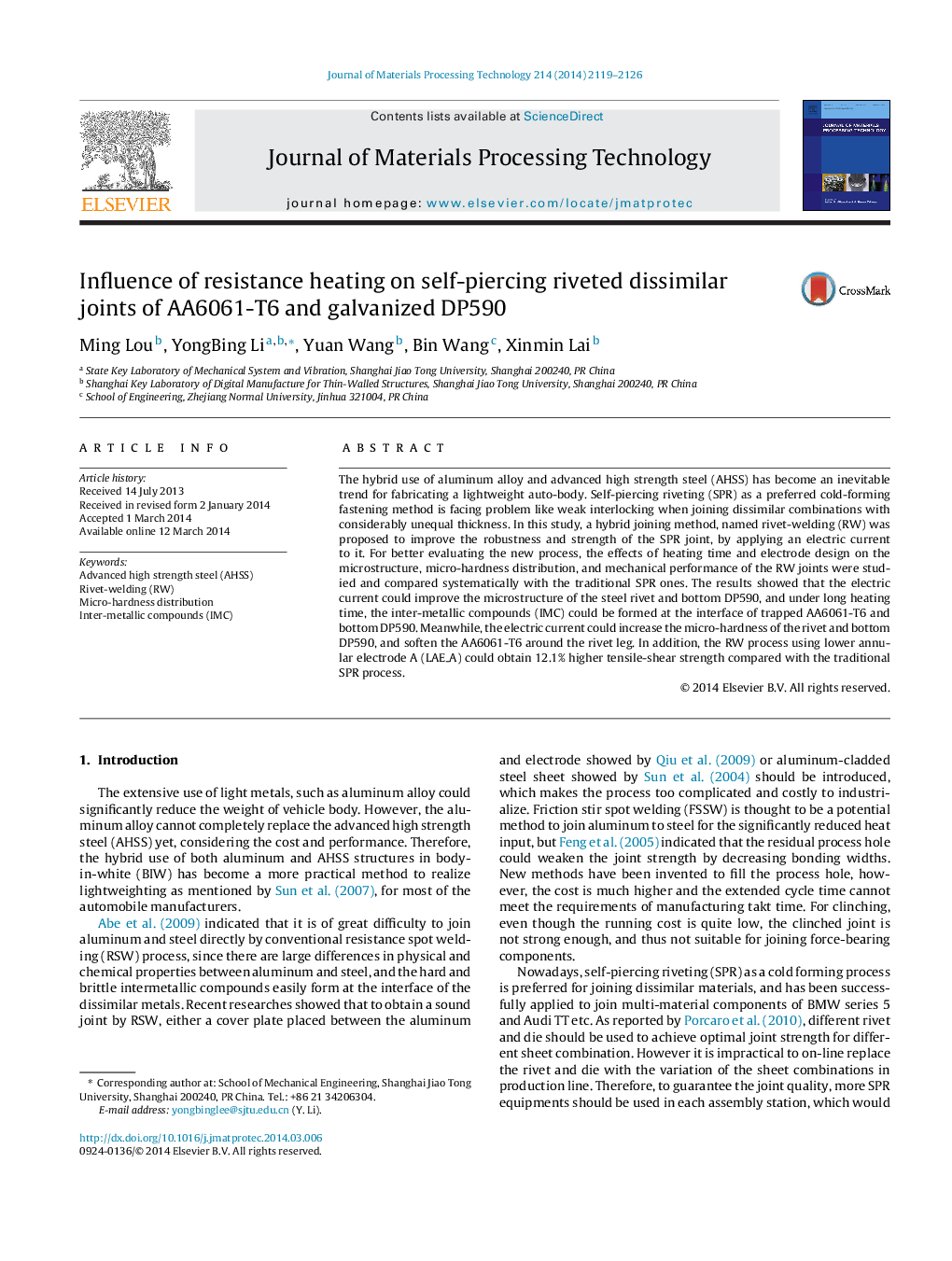| کد مقاله | کد نشریه | سال انتشار | مقاله انگلیسی | نسخه تمام متن |
|---|---|---|---|---|
| 790947 | 901898 | 2014 | 8 صفحه PDF | دانلود رایگان |

The hybrid use of aluminum alloy and advanced high strength steel (AHSS) has become an inevitable trend for fabricating a lightweight auto-body. Self-piercing riveting (SPR) as a preferred cold-forming fastening method is facing problem like weak interlocking when joining dissimilar combinations with considerably unequal thickness. In this study, a hybrid joining method, named rivet-welding (RW) was proposed to improve the robustness and strength of the SPR joint, by applying an electric current to it. For better evaluating the new process, the effects of heating time and electrode design on the microstructure, micro-hardness distribution, and mechanical performance of the RW joints were studied and compared systematically with the traditional SPR ones. The results showed that the electric current could improve the microstructure of the steel rivet and bottom DP590, and under long heating time, the inter-metallic compounds (IMC) could be formed at the interface of trapped AA6061-T6 and bottom DP590. Meanwhile, the electric current could increase the micro-hardness of the rivet and bottom DP590, and soften the AA6061-T6 around the rivet leg. In addition, the RW process using lower annular electrode A (LAE_A) could obtain 12.1% higher tensile-shear strength compared with the traditional SPR process.
Journal: Journal of Materials Processing Technology - Volume 214, Issue 10, October 2014, Pages 2119–2126